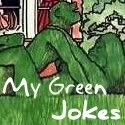WHEN THE CONQUISTADORS were ravaging and looting the ancient cultures of the Aztecs and Incas, native tribesmen told them about an amazing rumour. They said that there was a race, deep in the jungle, whose king was covered with gold dust and who swam in a golden lake. It was the story of ‘El Dorado’, the ‘Golden Man’. One of the first Spaniards to set off to find this fantasy land was Jimenez de Quesada. In 1536, Quesada and 500 soldiers hacked into the undergrowth from the northwest of what is now Columbia. After many hard days trudging through intense and dangerous jungle, they came upon two tribes of Chibchas, a race with plentiful riches. They had gold, silver and huge amounts of emeralds, but they did not have the fabled ‘El Dorado’. However, they told Quesada of a lake in the middle of a huge volcanic crater on the Bogota plateau not far away.
The natives revealed that the lake was called Guatavita and each year the bizarre ceremony of the Golden Man would take place. Tribal witnesses said the occasion was used to offer sacrifices and gifts to the god that they worshipped. The tribal king was smeared in sticky mud, on which gold dust was set. He and four other chiefs then sailed on a raft with their finest jewels and treasures, whilst the tribe played music at the shoreline. When the king and his party reached the centre of the lake they threw the offerings into the water, and the king then bathed himself to remove his golden covering. Quesada travelled to the lake, but could find no clue hinting at treasure. Other Spaniards heard the rumours about Guatavita, and the first attempt to dredge the lake began in 1545.
As the years passed, each new expedition heard other versions of the El Dorado legend. Each one ploughed into the jungle certain they would find the wealth. None ever did, but they did come across other interesting things. In 1537, one adventurer, Francisco de Orellana, was trying to find the golden city by sailing down the Napo River. Orellana reached the end of the Napo, and realised it was a tributary to another, massive river. As he floated along this, a tribe of long-haired, fierce female archers attacked his boat. The women reminded Orellano of the Amazons of Scythia in Greek legend, and he named the river ‘Amazonas’. In 1584 another native rumour appeared. It suggested that Incas fleeing from the Spanish invaders had created a new city of gold called Manoa. This became inseparable from the El Dorado legend, and in 1595 the British adventurer Sir Walter Raleigh attempted to find Manoa and its gold for Queen Elizabeth I. He failed, and a further fruitless expedition in 1617 helped to seal his execution. Over the years, yet another myth circulated – that of a lost mystical lake called Parima. It was described as being almost identical to Quesada’s initial discovery, Lake Guatavita.
Despite this, more expeditions floundered in the jungle, haphazardly slicing their way through the foliage until they ran out of supplies, funds, men or patience. Meanwhile, other Spaniards had decided to continue attempts at reaching the bottom of Lake Guatavita. In 1580s, Antonio de Sepulveda, a merchant living in Bogota, used 8000 native men to drain the lake by cutting a huge gash in the side. He did manage to remove a fair deal of water, and found considerable gold, but the earth walls collapsed, killing many workmen and causing the project to be abandoned. Further attempts to drain the lake continued right into the twentieth century, and many historically valuable artefacts were found, but never the great quantities of treasure promised by the legends. There can be little doubt that, despite the countless and varied attempts hunting through the jungle, the Conquistadors never uncovered all the secrets of the Amazon. Biology, botany and anthropology show us that there is still plenty of potential for new discoveries. Did the Spanish adventurers really find the lake of El Dorado? Almost certainly Lake Guatavita is that fabled lagoon. But nobody has found yet Manoa, and if the El Dorado myth has been proven real, there is good reason to suspect the Manoan legend will be too.
The natives revealed that the lake was called Guatavita and each year the bizarre ceremony of the Golden Man would take place. Tribal witnesses said the occasion was used to offer sacrifices and gifts to the god that they worshipped. The tribal king was smeared in sticky mud, on which gold dust was set. He and four other chiefs then sailed on a raft with their finest jewels and treasures, whilst the tribe played music at the shoreline. When the king and his party reached the centre of the lake they threw the offerings into the water, and the king then bathed himself to remove his golden covering. Quesada travelled to the lake, but could find no clue hinting at treasure. Other Spaniards heard the rumours about Guatavita, and the first attempt to dredge the lake began in 1545.
As the years passed, each new expedition heard other versions of the El Dorado legend. Each one ploughed into the jungle certain they would find the wealth. None ever did, but they did come across other interesting things. In 1537, one adventurer, Francisco de Orellana, was trying to find the golden city by sailing down the Napo River. Orellana reached the end of the Napo, and realised it was a tributary to another, massive river. As he floated along this, a tribe of long-haired, fierce female archers attacked his boat. The women reminded Orellano of the Amazons of Scythia in Greek legend, and he named the river ‘Amazonas’. In 1584 another native rumour appeared. It suggested that Incas fleeing from the Spanish invaders had created a new city of gold called Manoa. This became inseparable from the El Dorado legend, and in 1595 the British adventurer Sir Walter Raleigh attempted to find Manoa and its gold for Queen Elizabeth I. He failed, and a further fruitless expedition in 1617 helped to seal his execution. Over the years, yet another myth circulated – that of a lost mystical lake called Parima. It was described as being almost identical to Quesada’s initial discovery, Lake Guatavita.
Despite this, more expeditions floundered in the jungle, haphazardly slicing their way through the foliage until they ran out of supplies, funds, men or patience. Meanwhile, other Spaniards had decided to continue attempts at reaching the bottom of Lake Guatavita. In 1580s, Antonio de Sepulveda, a merchant living in Bogota, used 8000 native men to drain the lake by cutting a huge gash in the side. He did manage to remove a fair deal of water, and found considerable gold, but the earth walls collapsed, killing many workmen and causing the project to be abandoned. Further attempts to drain the lake continued right into the twentieth century, and many historically valuable artefacts were found, but never the great quantities of treasure promised by the legends. There can be little doubt that, despite the countless and varied attempts hunting through the jungle, the Conquistadors never uncovered all the secrets of the Amazon. Biology, botany and anthropology show us that there is still plenty of potential for new discoveries. Did the Spanish adventurers really find the lake of El Dorado? Almost certainly Lake Guatavita is that fabled lagoon. But nobody has found yet Manoa, and if the El Dorado myth has been proven real, there is good reason to suspect the Manoan legend will be too.



 Mystery RSS Feed
Mystery RSS Feed








No comments:
Post a Comment